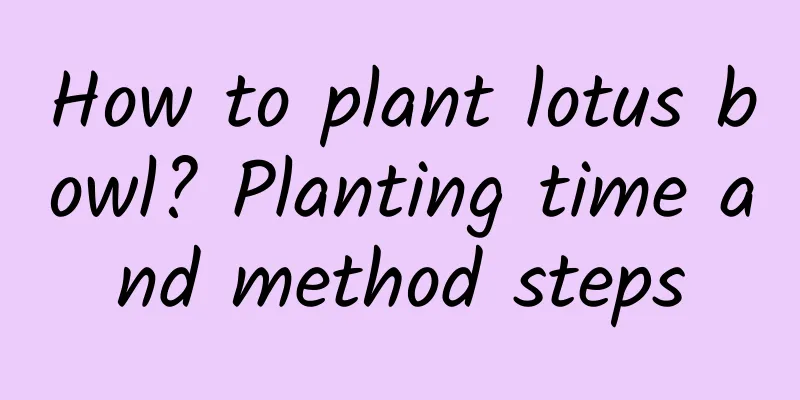How to plant and manage peanuts during flowering to achieve high yields (Key points of peanut flowering management technology)

1. Watering to fight droughtPeanuts are deep-rooted and drought-tolerant crops. Short-term droughts have little effect on yields, but long-term water shortages will seriously affect peanut yields. Peanuts have different water requirements in different growth stages. The water requirement is less in the seedling stage, gradually increases in the flowering and needle-setting stage, reaches a peak in the podding stage, and then gradually decreases. The water requirement pattern of peanuts throughout their life is low at both ends and high in the middle. During the flowering, needle-setting and pod-setting stages, peanuts grow and develop most vigorously. This is the period in their life when they require the most water, and it is also the critical period for peanuts to require water. If the drought continues, it will affect the growth of fruit needles, eventually leading to reduced yields or even no harvest. This is also the rainy season. In recent years, we have often experienced uneven droughts and floods here. Therefore, we have to decide whether to water to fight drought based on the weather forecast, and we must also pay attention to drainage. 2. WeedingWith the decrease in the efficacy of closed-type herbicides such as sethoxydim, and the damage caused by frequent field work by people coming and going, weeds in the peanut fields began to appear in large numbers, especially broad-leaved weeds such as horseradish, amaranth, prickly lettuce, and amaranth. Except for those that are not exposed under the mulch film, which need to be manually pulled out, the other weeds can be controlled by spraying herbicides, such as fluazifop-butyl + flupyralid, etc. The spraying effect is better when the soil is moist. 3. Pest and disease controlAphids and red spiders are more likely to appear in dry weather. After wheat harvest, pests such as cotton bollworm, beet armyworm, flea beetle, as well as diseases such as leaf spot and rust are likely to occur, so you must pay attention to spraying pesticides for prevention and control. The agents that can be used include pyrethroid pesticides such as imidacloprid, acetamiprid, spirotetramat, and high-efficiency chlorflucythrinate, acaricides such as emamectin benzoate, avermectin, and cypermethrin, and fungicides such as triadimefon, tebuconazole, fenpropimorph, and carbendazim. 4. Nutritional supplementWhen cultivating peanuts with mulch covering, fertilizer is basically applied once. It is not easy to apply topdressing later, so we can supplement it on the leaves. Peanuts require more calcium and potassium fertilizers, especially during the pod development period when the demand for calcium fertilizer reaches a peak, so we must pay attention to the application of calcium and potassium fertilizers, and it is best to apply them early. When combining spraying with pesticides to control pests and diseases, you can add appropriate amounts of calcium fertilizers such as potassium dihydrogen phosphate and chelated calcium to meet the peanuts' needs for potassium and calcium . 5. Promote growth and prevent fallingThe flowering and needle-setting period of peanuts is also their vigorous growth period. Due to the influence of factors such as soil, fertilizer, water, variety, density, etc., peanuts are prone to growing too tall and lodging. Currently, our commonly used method is to spray growth regulators to promote growth and prevent lodging. Commonly used growth control agents are mainly paclobutrazol, chlormequat, and chlormequat. During the flowering period of peanuts, when the plant height is about 30 cm, you can add a little when spraying to control nutritional growth, promote the transport of photosynthetic products to pods, and increase yield. |
<<: How to plant leaf mustard and field management techniques (how to plant mustard to grow well)
Recommend
What to do if the succulent spring sprouts grow too tall
What does the growth of succulent spring look lik...
How to Identify Red-Leaf Nandina
1. Appearance Red-leaf Nandina domestica is a shr...
How to cultivate yellow orchid
1. Maintenance methods 1. Substrate selection: It...
Can snow peas be grown in the north?
Can snow peas be grown in the north? Snow peas ca...
How to survive the winter
1. Control the temperature The temperature in win...
If you have these 5 kinds of flowers at home, you can even save money on buying medicine!
honeysuckle Effect: Honeysuckle is an ancient Chi...
Which month is suitable for sowing strawberries?
Strawberry is a very popular berry in the market....
What flowers are suitable for growing in Shizuishan? What are the city flowers and trees?
1. Climate characteristics of Shizuishan Shizuish...
How to grow daffodils well
1. Lighting Daffodils like sunny places. They are...
How to water the sweet olive
Watering method Osmanthus fragrans likes moisture...
What factors affect the price of orchids?
1. Variety influence The prices of orchids vary. ...
Main prevention and control measures for common flower diseases
Main prevention and control measures for common f...
What fertilizer is best for Impatiens
Impatiens fertilization time Impatiens is easy to...
How to eat Lai grapes
Direct consumption Lai grapes can be eaten direct...
How to manage azalea so that it does not wither, how to manage azalea after flowering
1. Picking flowers and pruning branches After the...









